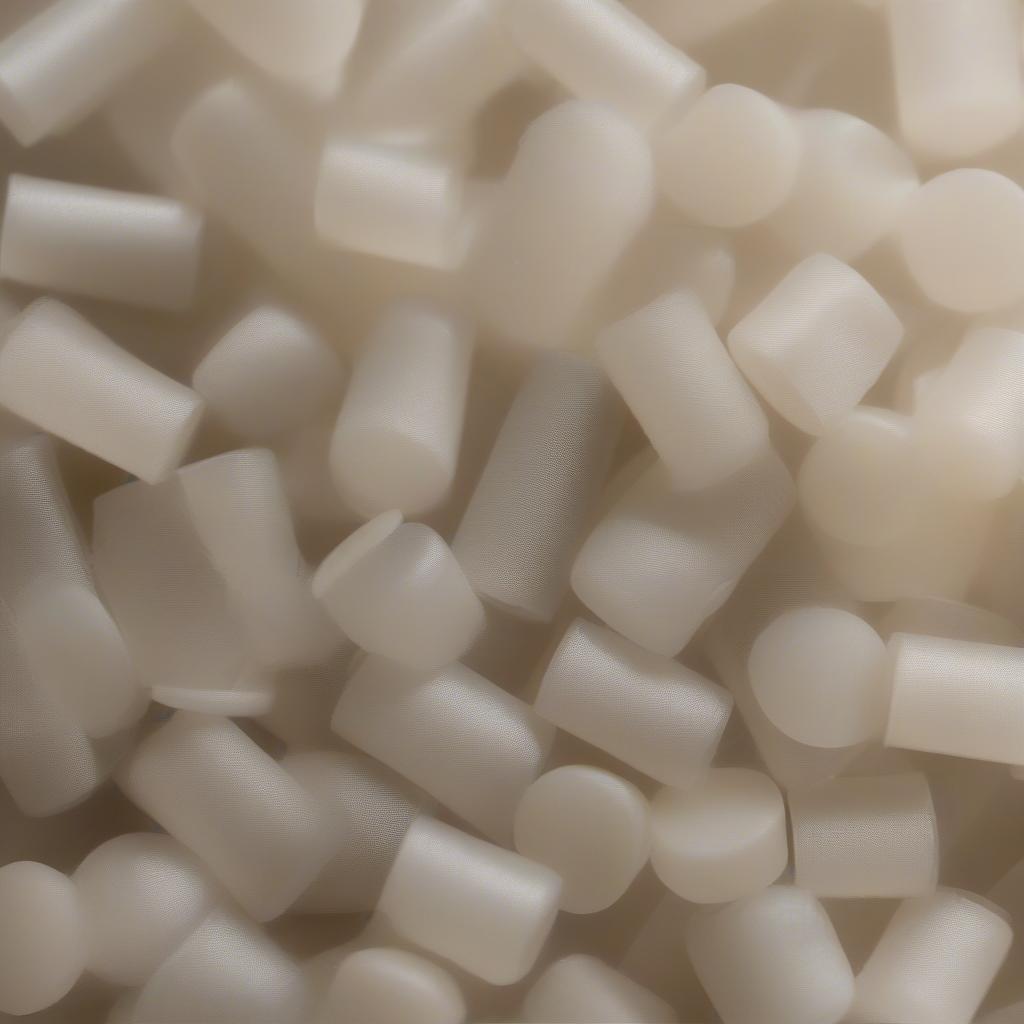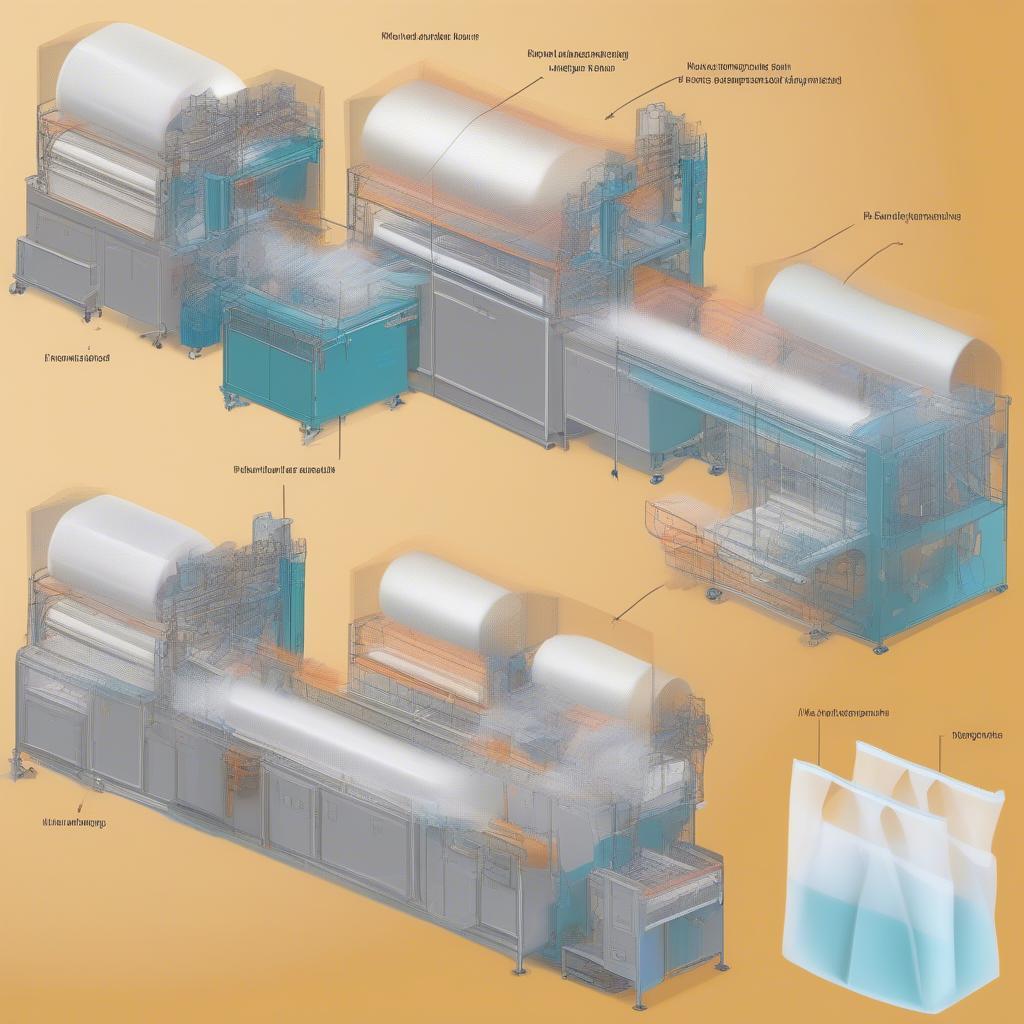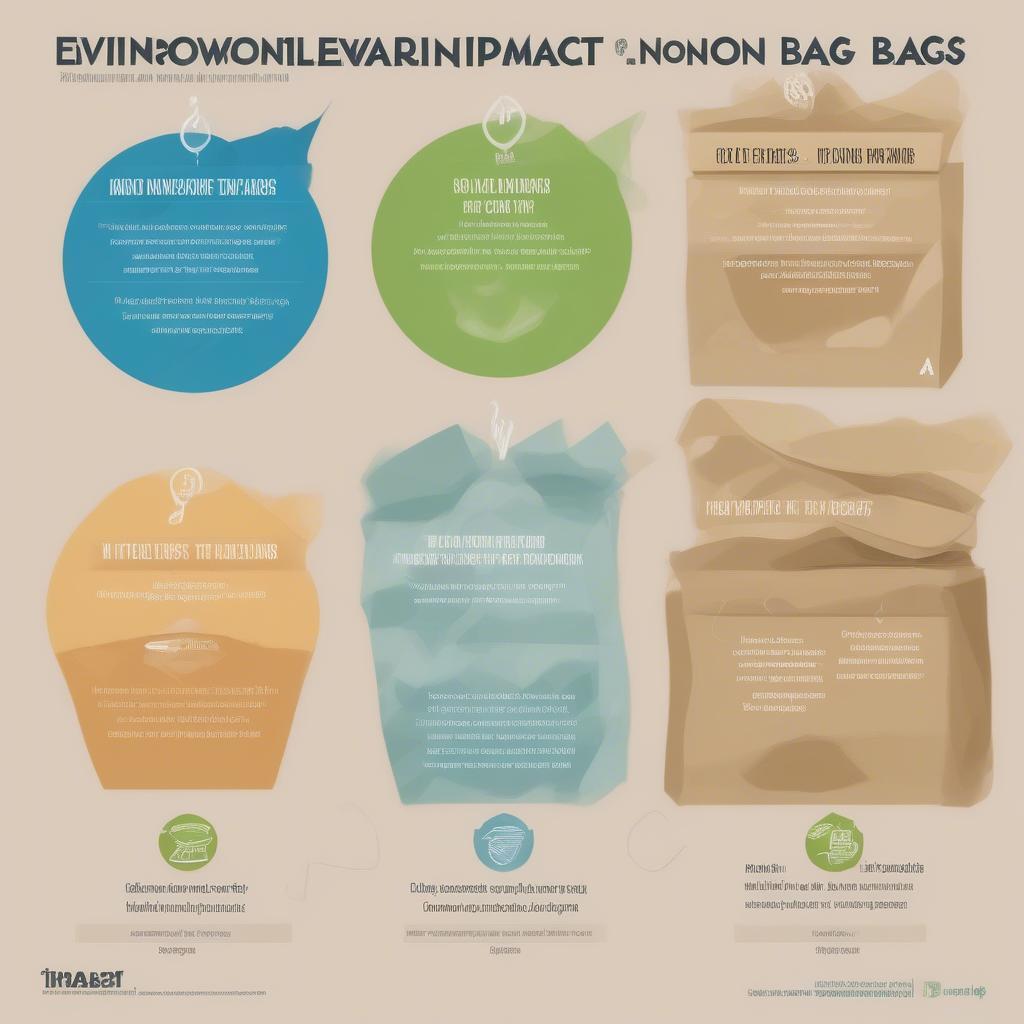Woven Bag
What is Non Woven Bags Made Of?
Non-woven bags have become ubiquitous, from grocery stores to promotional giveaways. But what exactly are these bags made of? This comprehensive guide will delve into the materials, manufacturing process, and environmental impact of non-woven bags. We’ll explore everything you need to know about this popular alternative to traditional plastic and paper bags.
Decoding the Composition of Non-Woven Bags
Unlike woven fabrics, which interlace threads, non-woven materials are bonded together through chemical, mechanical, or heat treatments. This creates a fabric-like material that is durable, lightweight, and cost-effective. The primary material used in the production of non-woven bags is polypropylene (PP).
Polypropylene: The Backbone of Non-Woven Bags
Polypropylene, a thermoplastic polymer, is the key ingredient in most non-woven bags. This versatile plastic is derived from petroleum and offers a unique combination of properties that make it ideal for bag production. It’s strong, resistant to tearing and stretching, and water-repellent. Moreover, polypropylene is recyclable, contributing to the eco-friendly appeal of non-woven bags.
 Polypropylene pellets used in non-woven bag production
Polypropylene pellets used in non-woven bag production
Other Materials in Non-Woven Bags
While polypropylene is the most common component, other materials can be blended or layered with it to enhance specific properties. These might include:
- Polyethylene (PE): Another type of plastic often added to increase flexibility and softness.
- Biodegradable Additives: These additives facilitate the decomposition of the bag in specific environments, reducing its long-term environmental impact.
- Recycled Materials: Some non-woven bags incorporate recycled plastics, further enhancing their sustainability.
How Non-Woven Bags Are Made
The manufacturing process of non-woven bags involves several key steps:
- Resin Production: Polypropylene resin is produced through a chemical process.
- Fiber Formation: The resin is melted and extruded into fine fibers.
- Web Formation: These fibers are then laid out to form a web.
- Bonding: The web is bonded together using heat, chemicals, or mechanical methods.
- Bag Fabrication: The bonded web is cut and sewn into the desired bag shape.
 Stages of non-woven bag production
Stages of non-woven bag production
You can find more information about woven polypropylene pp bags on our website. These offer a similar robust structure but with a different weaving technique.
Are Non-Woven Bags Environmentally Friendly?
The environmental impact of non-woven bags is a complex issue. While they offer advantages over single-use plastic bags, it’s essential to consider the entire lifecycle.
- Durability and Reusability: Non-woven bags are designed for multiple uses, reducing the need for frequent replacements.
- Recyclability: Polypropylene is recyclable, although the actual recycling rates vary depending on local infrastructure.
- Biodegradability: While standard non-woven bags are not biodegradable, options with biodegradable additives are available.
“Consumers need to be mindful of their bag usage habits, regardless of the material,” states Emily Carter, Sustainability Consultant at Eco Solutions Inc. “Reusing bags, choosing sustainable options, and proper disposal are crucial for minimizing environmental impact.”
 Comparing environmental impact of different bag types
Comparing environmental impact of different bag types
Non-woven tote bags are gaining popularity as a sustainable alternative. Explore our selection of non woven tote bag manufacturers for high-quality options.
Comparing Non-Woven Bags with other bag types
Non-woven bags offer a compelling alternative to traditional bags, like paper or plastic. They are typically more durable than plastic bags, allowing for reuse. Check out our article on pp woven big bag for information on larger, heavy-duty bags. Compared to paper bags, non-woven options are water-resistant, making them suitable for a wider range of applications. For example, a woven polypropylene gusseted bag provides extra storage capacity, ideal for grocery shopping. You can also find more specialized bags like pp woven bag zipper which provides added security.
Conclusion
Non-woven bags, primarily made of polypropylene, offer a practical and potentially sustainable alternative to traditional bag options. Understanding their composition, manufacturing process, and environmental impact allows consumers to make informed choices and contribute to a more responsible approach to bag usage. Remember to reuse your non-woven bags whenever possible to maximize their environmental benefits.
FAQ
-
What are the advantages of using non-woven bags? They are durable, lightweight, water-resistant, and often reusable.
-
Can non-woven bags be recycled? Yes, polypropylene is recyclable.
-
Are all non-woven bags biodegradable? No, standard non-woven bags are not biodegradable, but options with biodegradable additives exist.
-
What is the difference between woven and non-woven bags? Woven bags are made by interlacing threads, while non-woven bags are made from bonded fibers.
-
Are non-woven bags stronger than plastic bags? Generally, yes, non-woven bags are more durable and resistant to tearing than single-use plastic bags.
Other Questions
- What are the different types of non-woven fabrics used in bags?
- How can I tell if a non-woven bag is made from recycled materials?
- What are the best ways to dispose of a non-woven bag?
For further information on related topics, explore our articles on various bag types and materials on Basket Weave.
Need help? Contact our 24/7 customer service at Hotline: +84 388 951 999, or visit our offices in Hanoi, Vietnam or Tech Avenue, Suite 12, San Francisco, CA 94105, USA.
